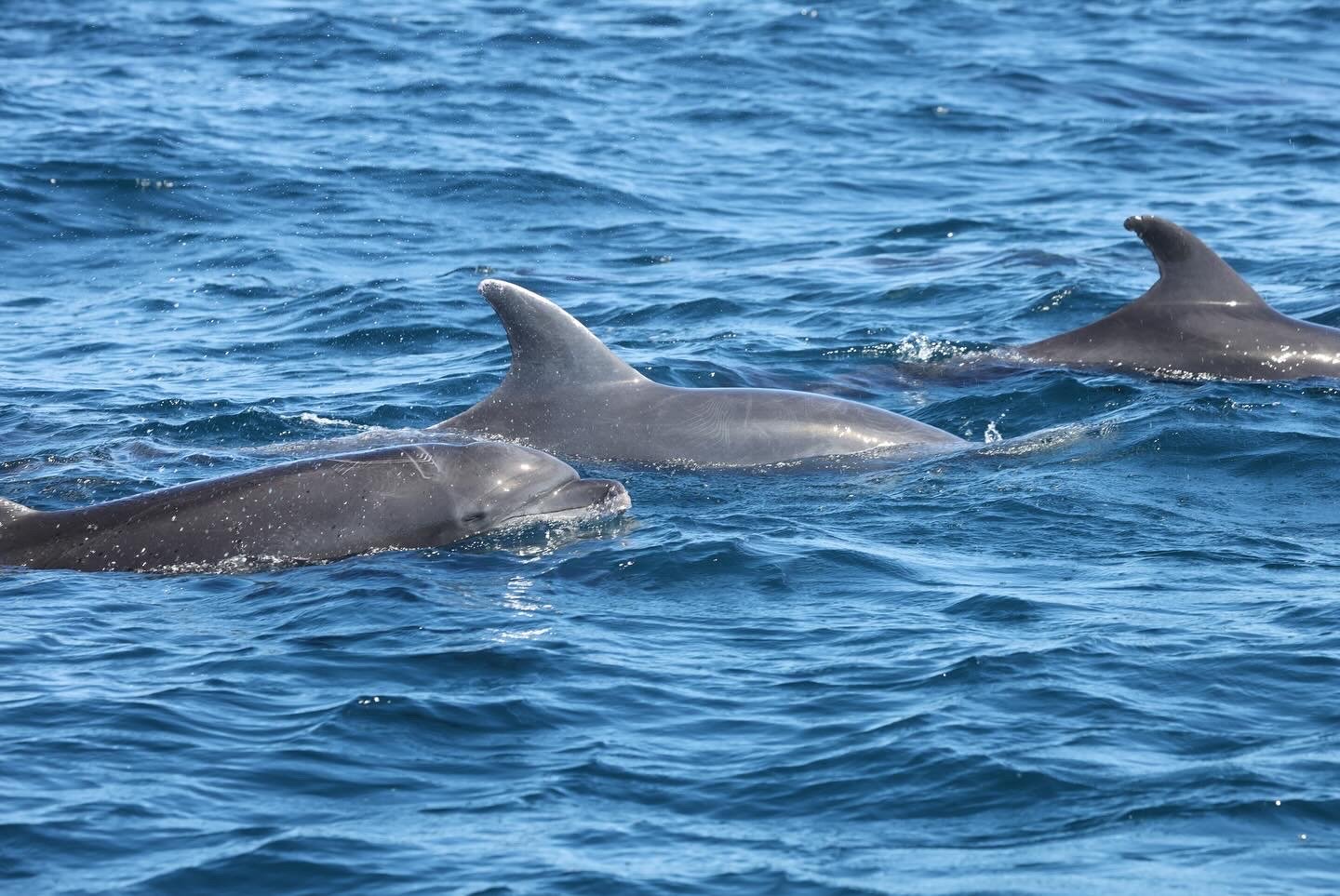Dolphins and anthropogenic injuries: A call for conservation in Loreto Bay National Park
Dolphins are among the most intelligent and social marine mammals, yet they face numerous threats from human activities. Recent observations in Loreto Bay National Park have highlighted the pressing need for conservation efforts, particularly through regenerative tourism, which aims to protect marine life while promoting sustainable interactions with nature.
Bottlenose pod in Loreto Bay National Park
Observations of Dolphin Injuries
During a recent marine expedition in Loreto Bay National Park near Coronados Island, participants and our team observed a family of bottlenose dolphins. Alarmingly, one dolphin was found with a fishing lure caught on it, posing significant health risks. Another dolphin bore an old injury on its fin, a stark reminder of the long-lasting effects of human interference. These encounters underscore the impact of anthropogenic activities on dolphin populations and highlight the necessity for awareness and action in conservation efforts.
Bottlenose in Loreto Bay National Park with a fishing lure caught on it
Understanding anthropogenic injuries
Anthropogenic injuries in dolphins often stem from various human-related activities, including:
Fishing gear entanglement: Many dolphins become entangled in fishing nets or lines, leading to severe injuries or death. Studies indicate that fisheries are a predominant source of injuries among dolphin populations
Boat strikes: Collisions with vessels can cause serious physical trauma to dolphins. Research has shown that such injuries can disrupt social structures and behaviors within dolphin groups
Food Provisioning: Illegal feeding practices can condition dolphins to seek human interaction for food, increasing their risk of injury from boats or aggressive encounters with humans
The Role of Regenerative Tourism
Leopoldo Sanmiguel from Baja Adventures during the marine expedition in Loreto
Regenerative tourism offers a pathway to not only enjoy but also protect marine ecosystems. By engaging in responsible practices, tourists can contribute to the conservation of marine life. Efforts include:
Photo ID Projects: Initiatives like documenting local bottlenose dolphins help researchers study their distribution and monitor any anthropogenic marks or injuries. This data is crucial for understanding the extent of human impact on these animals.
Awareness Campaigns: Educating tourists about the consequences of their actions can foster a culture of respect towards wildlife. Highlighting incidents like those observed in Loreto Bay serves as a powerful reminder of the need for responsible behavior around marine life.
Bottlenose in Loreto Bay National Park with an old injured fin
The observations made during our recent expedition in Loreto Bay National Park serve as a clarion call for increased awareness and action regarding the protection of dolphins and their habitats.
By embracing regenerative tourism and actively participating in conservation efforts, we can help mitigate the impacts of human activities on these magnificent creatures. Supporting initiatives that document and address anthropogenic injuries is vital for fostering a healthier relationship between humans and marine life.
Thank you for joining us in our commitment to conservation in Loreto Bay.
Together, we can make a difference for dolphins and the broader marine ecosystem.
Baja Adventures sunrise during the marine expedition in Loreto





